Mountain Biking the Sacred Valley in Peru
Learn how to plan an unforgettable Peru mountain biking trip including tips on what to expect, how to book a trip and more.
Peru has long attracted many adventurous travelers from the intrepid hikers who ascend up to the ancient city of Machu Picchu to mountaineers hoping to summit the 15 peaks in the Cordillera Blanca. But if you’re reading this post, chances are your idea of an Incan adventure is mountain biking down Peru’s mountainous slopes and along the large network of old Inca trails and footpaths.
When I was presented with the opportunity to go on a week-long mountain bike trip to the Sacred Valley in Peru, of course, I said YES.
And it was incredible. Beyond incredible! The scenery, rugged terrain, glimpses into rural Andean culture, the food (and pisco sours), and all the people we met along the way made for an unforgettable trip. So if you’re looking for an adventure and are itching to explore a new and exciting place, definitely consider putting Peru on your mountain bike bucket list.
Watch the highlights of my Peru mountain biking trip!
What & Where is the Sacred Valley?
The Sacred Valley is an area in Peru’s Andean highlands that stretches for about 60 kilometers. It’s famous for its incredible mountain landscapes, vast Inca Trail network, small villages, and outdoor adventure for visitors.
This region once formed the heart of the Inca Empire in the early 15th century AD up until the Spanish conquest in the 1530s.
You can still see plenty of ancient Inca artifacts like stone ruins, rows upon rows of agricultural terraces, and footpaths that have been used for centuries.
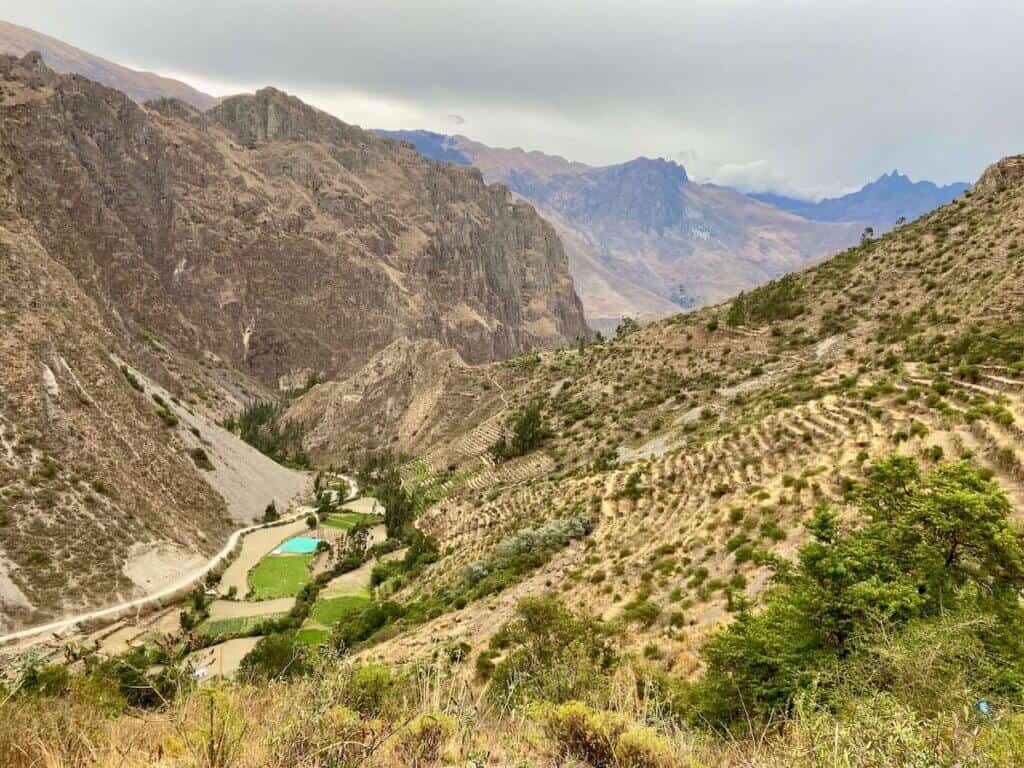
The Sacred Valley encompasses Cusco, the capital of the Inca Empire, as well as several smaller villages including Ollantaytambo, where my Peru mountain biking trip was based, Pisac, which is known for its Sunday handicraft market, and the impressive mountaintop citadel of Machu Picchu, among other smaller towns and villages.
Before You Go
Trail difficulty
Mountain biking in Peru isn’t for the timid or faint of heart. I was actually pretty surprised at how technical some of these trails are. Sure, there are fast and flowy sections, but there are definitely also steep, rocky, loose sections as well. I walked several features throughout the week and I consider myself a pretty advanced rider.
I’d say to really enjoy this trip for all that it has to offer, you should be at least a strong intermediate rider.
Also, keep in mind that the majority of trails you’ll be riding on are old Incan footpaths. They are not purpose-built mountain bike trails, so they’re a bit raw, rough, rowdy, and exciting!

Elevation
For the Peru mountain biking trip that I did, we were based in the town of Ollantaytambo, which is at an elevation of 9,160 feet. However, most of our rides started way higher than that – between 13,000 – 14,000 feet. So, yeah, you’ll be at altitude.
The good news, though, is that 99% of the riding (at least for my trip) was downhill. We did very little climbing. I’m not anti-climbing, but at 13,000ft I was definitely happy to be descent-focused!
Exposure
You can expect some exposure on the trails, but honestly, the worst exposure was on several of the shuttle rides to the trailheads. You’ll be driving on some steep and winding mountain roads, many of which don’t have guardrails or even enough space for two cars to pass each other without backing up to a pullout.
As for exposure on the trails – there is some, but I never felt like I would ‘die’ if I went off the edge or that the trails were particularly perilous.
That being said, be sure to bleed your brakes and put in new brake pads before you go (see How to Prepare For Your Trip below).
Can I do this as a DIY trip?
Honest answer is no. It would be very difficult and frustrating to put together a DIY Peru mountain biking trip. Many of the trails start in extremely remote and rugged areas and can take 1-2 hours of shuttle-time to get to.
Unless the driver is familiar with mountain biking in the area, most likely they will have no clue as to where to drop you off. Trying to coordinate multiple shuttles in a day on different trails would be near impossible.
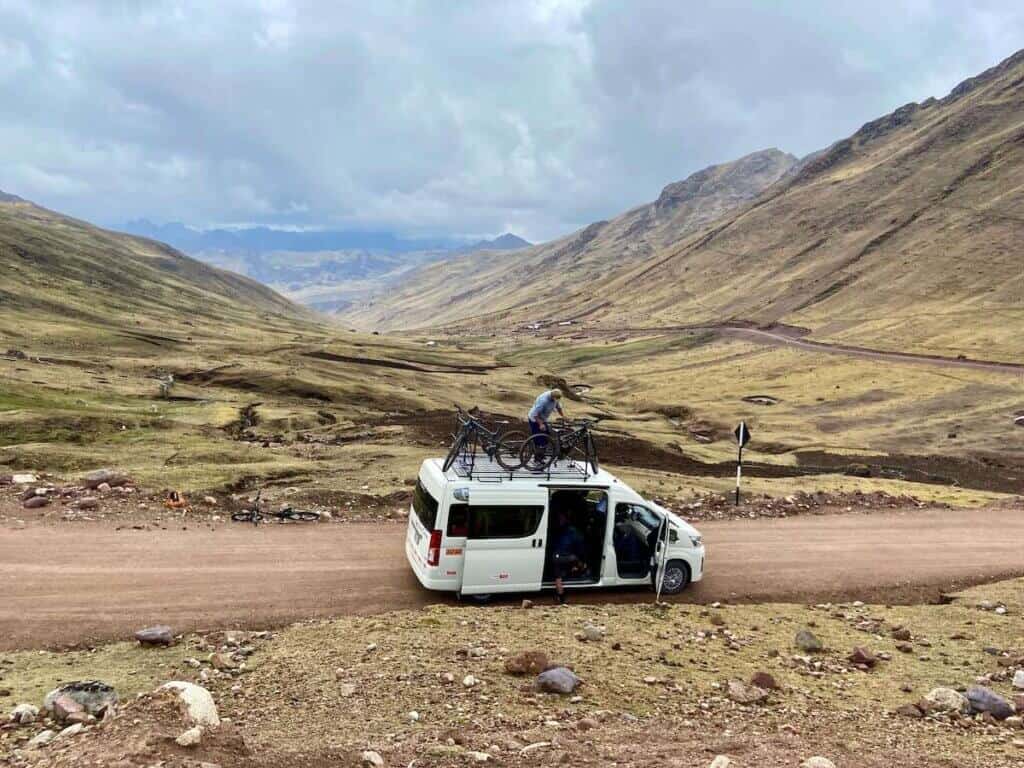
Additionally, trying to navigate the routes by yourself would also be a huge challenge since these trails are constantly changing and evolving. A guide is essential!
Last, but not least, people in Peru and the Sacred Valley rely on tourism to make a living. In my opinion, if you try to put together a DIY trip because you don’t want to spend the extra money hiring a guide and utilizing a tour operator, then you should consider sticking to developed mountain bike destinations like those in the US or Europe.
I did my Peru mountain biking trip through World Ride, an organization that seeks to empower women throughout the world through mountain biking. We got to ride with several local women shredders, which was amazing, and all of the logistics for our trip like a hotel, daily shuttles, an awesome guide, etc… was taken care of. Learn more about World Ride in the itinerary section below.
What type of bike to bring
I strongly recommend bringing your own bike to Peru. Rental bikes are very few and far between and since bike parts are hard to get in Peru, they’re probably also not going to be in the best of conditions.
Since the trails in Peru are pretty raw and rugged, it’s a good idea to have a bike that you’re used to and comfortable riding. I brought my Santa Cruz Bronson and felt like it was a pretty perfect choice for biking in Peru (150 rear suspension, 160 front fork suspension).
If you need suggestions on bike bags, head over to my post on the Best Bike Travel Bags.
Related: Tips for flying with a bike & the best airlines to choose

My Trip Details
World Ride
My Peru mountain biking trip was through World Ride, a non-profit organization that works to empower women globally through mountain biking. Proceeds from World Ride trips go toward projects that help support women’s mountain biking such as:
- Building up bike libraries so that women can ‘check out’ a mountain bike for the day
- Helping women get certified and trained as coaches and guides
- Helping to organize women’s rides and events
- Employing women as mountain bike guides
- Supported female racers with their travel expenses and gear
While we didn’t have a female guide on our World Ride Peru trip (although Jose was amazing!), we did get to ride with a few local women on two different days. One of them was even the downhill national champion for Peru! It was really fun to be able to share our trip and experience with them and have them show us around their local trails.
If you’re wondering whether you need to be a female to sign up for a World Ride trip, you don’t. World Ride trips aren’t just for women, most of the trips are co-ed unless otherwise noted.
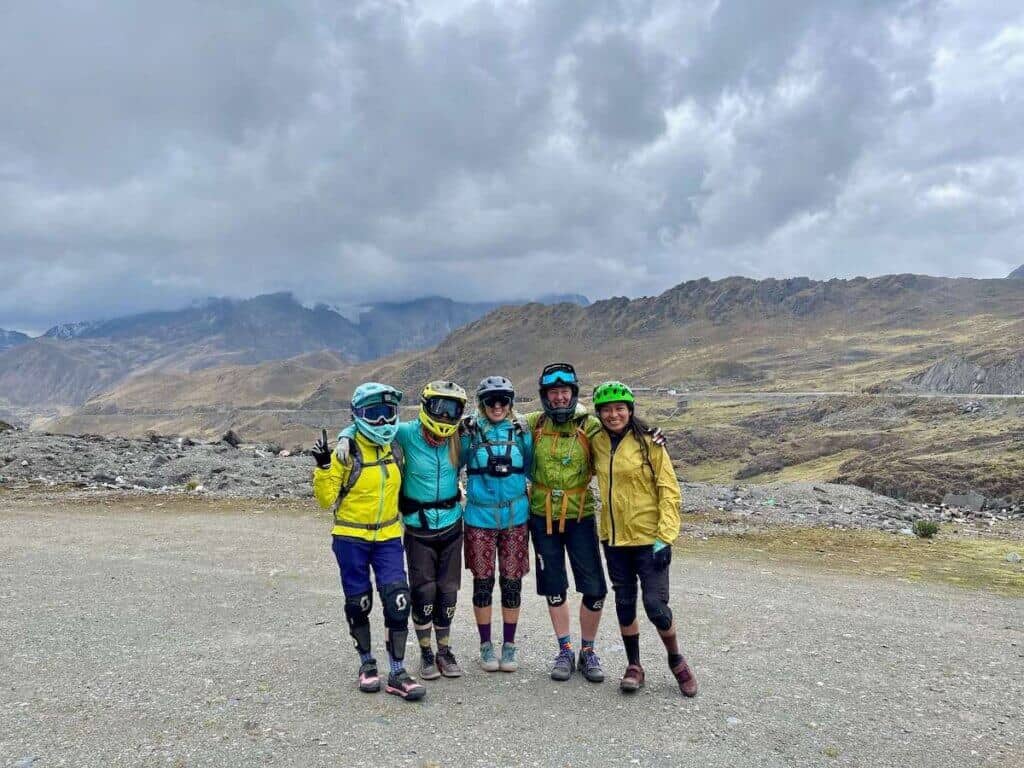
Day-by-day itinerary
This is the mountain biking itinerary for my 7-day trip. However, be aware that the rides and shuttles may differ for your trip depending on weather, rider ability, road conditions, time, etc…
Day 1: Cusco to Ollantaytambo
- Trails ridden: Pumamarca
- Elevation high: 11,031 feet
- Total descent: 1,804 feet
- Total mileage: 3.8 miles
- Highlights: Super fun descending above the town of Ollantaytambo with a few tricky areas including steep pitches and rock gardens; ride through the town of Ollantaytambo on cobblestone streets back to the hotel
After a 1.5-hour transfer from Cusco to Ollantaytambo, we got settled into our hotel and then spent about an hour building our bikes with the help of four resident llamas.
Once our bikes were back in one piece and working as they should be, we ate a quick lunch and then headed off for our first shuttle ride of the trip!

Pumamarca is a downhill trail located just outside the town of Ollantaytambo. It offers incredible views of the valley (which are especially impressive when you’re viewing them for the first time!) and has a bit of everything from fast flow to tricky rock gardens.
It’s a short and sweet trail, which ends with a pedal through the cobblestone streets of Ollantaytambo back to the hotel with great views of the Quelloraqay ruins and the ‘face’ in the mountain.


Day 2: Salt Mines and Moray
- Trails ridden: (1) Misminay/Moray/Maras, (2) Paucarbamba, (3) Yanahuara
- Elevation high: 12,600 feet
- Total descent: 6,374 feet over three shuttled descents
- Total mileage: 15.7 miles
- Highlights: Amazing views of the valley on the shuttle rides; three long descents; views above the Incan ruins of Moray; ‘discovering’ the salt mines
We did three descents today and all of them were epic! The drive up to the top of the first descent was incredibly scenic with beautiful views of the valley and river below.
Misminay/Moray/Maras. This first descent started at 12,600 feet and descended down the slopes of the mountain to the river in the valley below. Along the way, we passed the mysterious Incan archaeological site of Moray, which consists of several terraced circular depressions, rode through the town center of Maras, and pedaled next to a huge collection of salt pools just outside of town.


The riding was pretty technical in sections with steep chutes and rocky terrain, but there were also plenty of fast, flowy parts, some of which were ‘choose your own adventure down the mountain’ kind of riding.
Paucarbamba. This was a shorter descent in the same area as the first ride, but it was no less epic. Incredible mountain and valley views, fast and fun riding through fields, and several techy and rocky sections that will test your skills.
Yanahuara – Our final shuttle of the day was on the other side of the valley above the town of Urubamba. We had to pedal up the last mile or so of road because it was all torn up for repairs and even though it was only about 300 feet of climbing, I felt like I was dying!
Thankfully, the descent had virtually no climbs – it was all fast, flowy singletrack, albeit a bit overgrown. It was one of my favorites of the trip, though. Not much tech, just fast and flowy!
Day 3: Mega Avalanche
- Trails ridden: (1) Half Inca Mega Avalanche, (2) full Inca Mega Avalanche, (3) Pumamarca
- Elevation high: 14,224 feet
- Total descent: 8,120 feet over three shuttled descents
- Total mileage: 15.1 miles
- Highlights: Riding a mega avalanche course!; shredding with two local Peruvian women and one 15-year ex-pat who runs Haku Expeditions
Mega Avalanche day! This day was so much fun. We got to ride with three local women and shred a mega avalanche course, which was definitely a highlight of the trip. (Mega Avalanche races are basically a kamikaze race where dozens or even hundreds of riders all start at the same time and race to the bottom. There’s typically a lot of carnage).
For the first run, we started at the top at 14,224 feet and rode to about the halfway point. Then we shuttled back up to the top and rode the whole way down.
The bottom half of the course definitely has more technical, rocky terrain, but you also have to cross a paved highway every few minutes, which can be hairy depending on how the traffic.
But the course itself is epic. There is a ton of different variety like boggy fields, sections of the ancient Inca Trail, super gnarly rock gardens (I walked a few), fast flow, drops, jumps, etc…
We also rode with a few local women – Rosa, who is the national DH champ for Peru, and Estella. Both are amazing riders and it was so fun to share our ride with them. We also rode with Nichole, a 15-year ex-pat who runs Haku Expeditions with her husband. I’m eyeing their Colombia trip!
After a late lunch, we headed up to Pumamarca to do a final run of the day. So fast and fun 🙂

Day 4: Patalares & Colca Canyon (aka Lares Pass)
- Trails ridden: (1) Patalares, (2) Colca Canyon
- Elevation high: 13,872 feet
- Total descent: 5,210 feet over two shuttled descents
- Total milage: 11.7 miles
- Highlights: Extremely rugged and remote terrain; incredible views (including glaciers!); soaking in natural hot springs; Colca Canyon = epic
The drive up to Lares Pass was incredible. We were wayyy out there. We passed small Andes communities, tons of llamas, saw a condor soaring overhead, and even got hailed on at the top.
As for riding, this was my least favorite and favorite day. The start of Patalares was a struggle for me because it was a lot of sidehill pedaling over rugged and rocky terrain without a clear trail. I felt like I couldn’t catch my breath or get into a groove. It would have been fine if we weren’t at 14,000 feet!
But soon things turned around and it got super fun. We followed almost non-existent lines down through farms and fields until we hit a small town where we picked up a restored part of the Inca Trail that was fast and flowy and had some fun features like rocky steps to drop and drainages to hop over.
The trail led us to Lares hot springs, where we soaked for an hour before heading to the town of Lares for lunch.

After lunch was my FAVORITE ride of the trip – Colca Cayon. It was SO incredibly beautiful. The ride started up high at the base of a glacier and it was very cold, but we warmed up quick. We followed the Inca Trail down through a beautiful canyon with a river on one side and a big rock mountain on the other.
We also saw a few ancient ‘tombs’ nested in the rock walls. These were where the Inca mummified and buried respected and important people in their community. Everything about this ride was amazing…

Day 5: Machu Picchu!
Day 5 was Machu Picchu day. To be honest, I never really had a desire to visit Machu Picchu. I’m not really drawn to the touristy ‘must-see’ places around the world. But that being said, Machu Picchu is freaking amazing.
We took a train from Ollantaytambo to Aguas Calientes, the town at the base of Machu Picchu, and then hopped on a bus up to Machu Picchu. My expectations weren’t super high because Machu Picchu is so touristy. However…. it was incredible! Definitely breathtaking and mind-blowing. The views, the engineering, the history, all of it was very impressive and fascinating.

Day 6: Lamay
- Trails ridden: (1) Lamay, (2) Huama Lamay
- Elevation high: 13,789 feet
- Total descent: 4,862 feet over two shuttled descents
- Total mileage: 9.5 miles
- Highlights: Mountian biking on ancient Inca Trails; fast flow; riding with Claudia – another local woman shredder
I think all of us were a bit tired today. We did two shuttled descents – Lamay and Huama Lamay. Both trails were fun with a good mix of tech and flow. We also got to ride with another local girl – Claudia. It was a fun day, just felt tired and low energy!

Day 7: Last day!
- Trails ridden: Pumamarca
- Elevation high: 11,031 feet
- Total descent: 1,804 feet
- Total mileage: 3.8 miles
- Highlights: Super fun descending above the town of Ollantaytambo with a few tricky areas including steep pitches and rock gardens; ride through the town of Ollantaytambo on cobblestone streets back to the hotel
We squeezed in one final ride down Pumamarca before breaking down our bikes and driving back to Cusco for our flights the following day.

How to prepare for your Sacred Valley mountain bike trip
Before embarking on your trip to Peru, here are a few things to consider.
Do (or get) a full bike tune-up
Bike shops and parts in the Sacred Valley are very limited. It’s highly recommended to do – or get – a full bike tune-up and replaced worn parts before you go. Here’s a bike maintenance checklist:
- Bleed brakes
- Put on new brake pads (bring half-used ones with you for spares)
- Put on new tires if they’re even remotely a bit worn
- Add a few ounces of fresh tire sealant
- Grease pivots
- Check spoke tension
- Adjust shifting if it’s off (check to see if derailleur hanger is bent)
- Do a front fork and rear shock service if you’re due for one (shocks should be serviced after every 50 or so hours of riding)
- Replace shock seals if needed
- Address any creaking or other noises
Consider getting a prescription for altitude sickness medicine
I typically don’t do well at elevation, so I got a prescription for altitude sickness and I’m glad that I did. Sure, I still felt like I couldn’t breathe when pedaling up the smallest of inclines, but I didn’t have any headaches, dizziness, or nausea.
If you’re worried about altitude sickness during your Sacred Valley mountain biking trip, definitely consider taking medication. Ollantaytambo, where we were based for the week, is at 9,160ft and most rides start at around 13,000- 14,000ft.
Purchase travel insurance
Travel insurance is cheap and there’s no excuse not to have it, especially when you’ll be bombing down the sides of the Andes mountains for a week on a bike. I use World Nomads for my travel insurance. It’s cheap, easy to purchase, and gives me peace of mind, especially when checking my bike for a multi-flight trip (World Nomads covers baggage damage up to a certain dollar amount depending on which plan you choose).
Book your hotel in Cusco
I recommend getting to Cusco a few days early so you can start to acclimatize to the elevation. I wish I had arrived more than a day early, but instead, I spent a few days exploring Lima.
I did stay at a really nice and relatively affordable hotel in Cusco, though, that I highly recommend. Tocuyeros Boutique Hotel is a bit off the main square (which was really nice) and it has amazing views out over the city. Plus, the rooms are huge, stylish, and cozy. I could live here!

What to pack for your Peru Mountain Bike Trip
It is very challenging (if not impossible) to find mountain bike gear, tools, and spare parts in the Sacred Valley, so you need to be sure to bring everything you might need. Here’s my suggested packing list.
Sign up for my newsletter and get a free downloadable bike trip packing list
Mountain bike gear & apparel
- Full face helmet (I was very happy to have a full-face!)
- Knee pads and/or elbow pads
- 3-4 chamois (find my favorites here)
- 2-3 jerseys (best women’s mountain bike jerseys)
- 2 baggie shorts (best women’s mountain bike shorts)
- 3-4 pairs of socks
- 2 pairs mountain bike gloves
- Buff or neck gator
- Rain jacket
- Mountain bike shoes (check out the best Women’s Mountain Bike Shoes here)
- Mountain bike goggles or sunglasses
- 2 sports bras
- Layers of clothing (at least one lightweight, mid-weight, and heavy-weight layer)
- Hydration pack (best hydration packs for mountain biking)
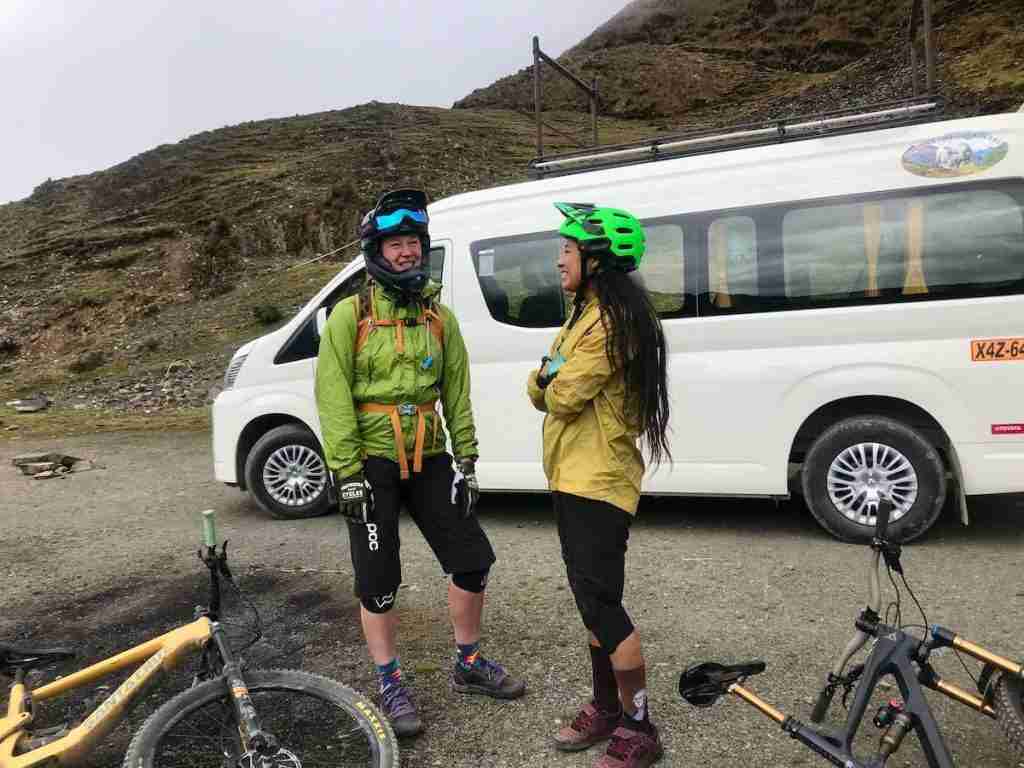
Mountain bike tools & spare parts
- Shock pump
- Small bottle of tire sealant
- Tire plugs
- Small bottle of chain lube
- Rag/cloths
- Hand pump
- Spare tube
- Multi-tool
- 2-3 spare valve cores
- Master chain link
- Set of spare brake pads
- Spare derailleur hanger
- Zip ties
- Gorilla tape or masking tape (helpful when packing bikes back up)
Miscellaneous items
- Sunscreen
- Snacks (there are plenty of stores in Ollantaytambo to buy snacks, but I’d still recommend bringing a few of your favorite bars or energy snacks)
- Extra stuff you want to give away! It is really hard for mountain bikers in Peru to get gear and spare parts, so if you can, pack a few extra items to give away when you’re down there like tubes, tires, knee pads, tools, spare parts, etc… it will be much appreciated
- A bathing suit – you’ll visit the Lares hot springs, so be sure to pack a bathing suit (towels are available for a small charge).
- A GoPro. I really regretted not taking my GoPro with me on this trip. I’m intimidated by the thought of editing footage, but I really wish I had taken my Hero8 with me. Thankfully, Galen – one of the other riders – shot some video that he shared with me!
What questions do you have about mountain biking in Peru? Does this sound like a trip you’d love to go on? Let us know in the comments below!


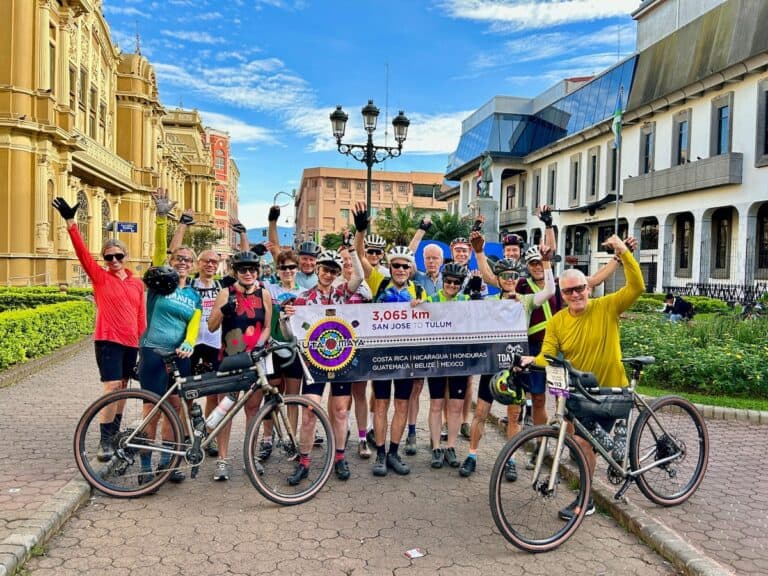
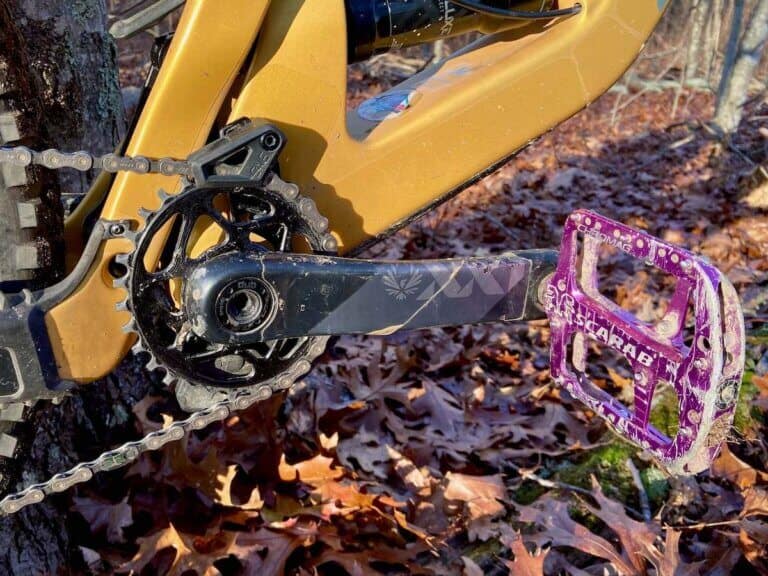
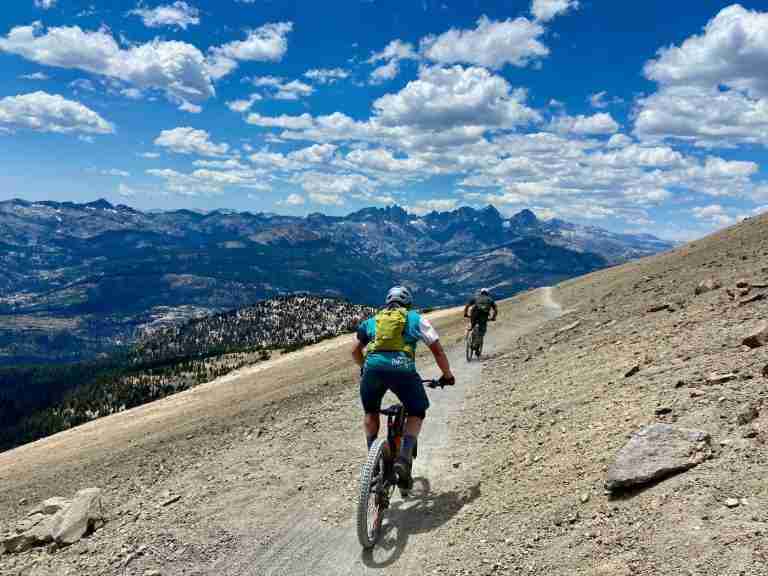

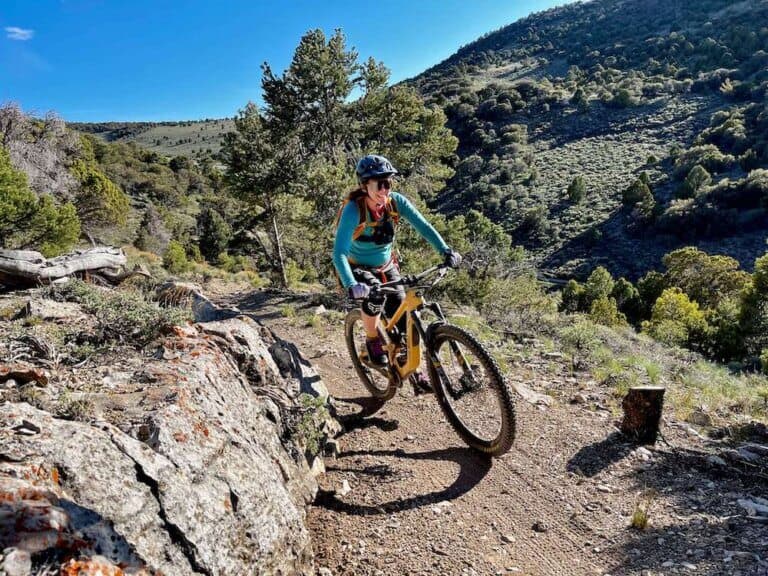
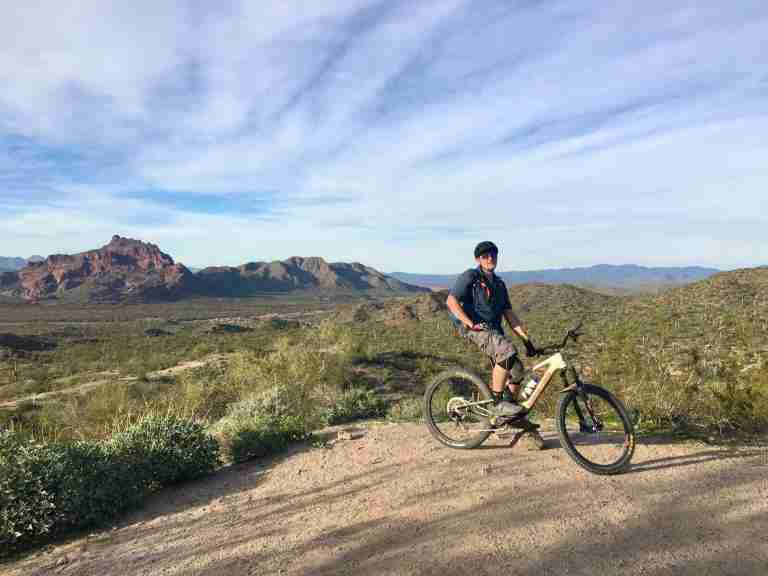
This was a great blog Becky! So glad to have met you while down here in Peru!
Have fun on your travels!
Nicole
(Haku)
Thanks Nicole! Such an amazing trip and super fun riding with you and the other girls 🙂